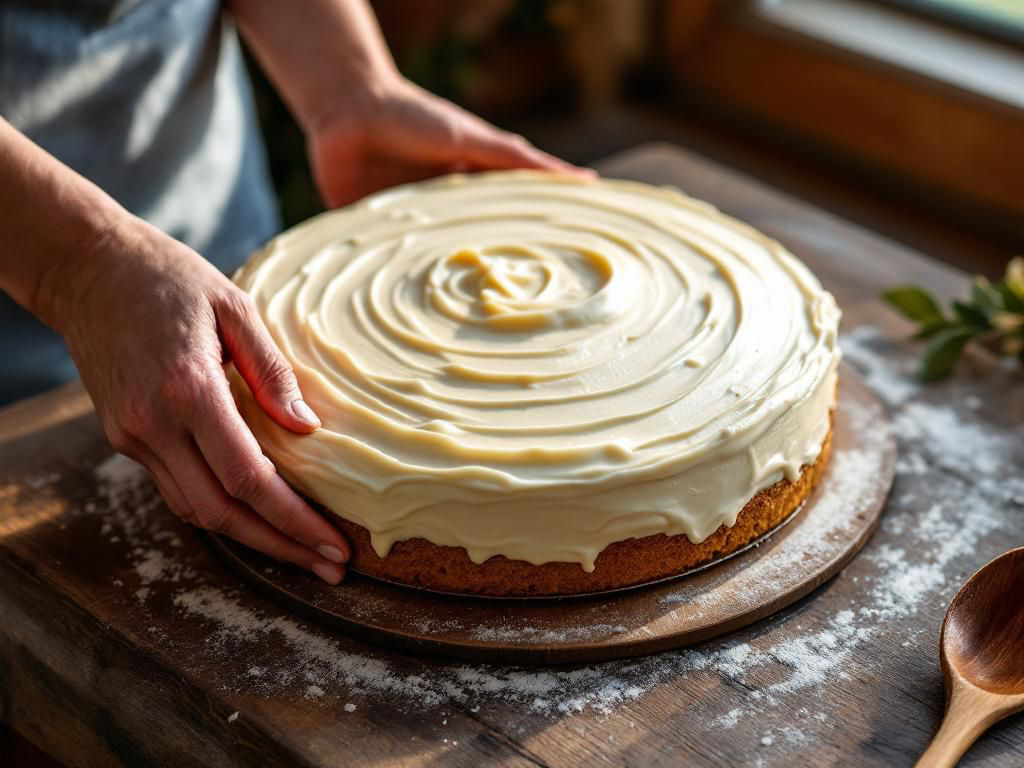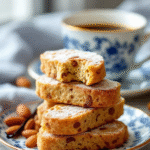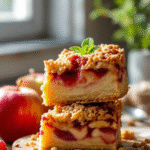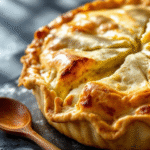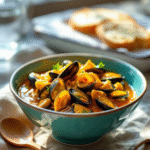For over 40 years, Mary Berry has been the trusted voice in British baking. Trained at Paris’s famous Le Cordon Bleu, she’s written more than 70 cookbooks (like the essential Mary Berry’s Baking Bible) and charmed the nation on The Great British Bake Off. Awarded a CBE and a Lifetime Achievement Award for food writing, her recipes are known for being reliable, elegant, and focused on good ingredients. Her almond icing – sometimes called marzipan – is a perfect example. It’s not just for covering cakes; it’s a sweet, nutty layer of tradition, essential for classics like Christmas cake or Simnel cake. Let’s make it her way.
Why Mary’s Almond Icing Works
Mary believes in using “the best you can afford.” For this icing, that means:
- Fresh, finely ground almonds: Avoid coarse or stale ones. Look for unwaxed, non-chemically blanched if possible.
- Pure almond extract: Never artificial essence. It makes all the difference.
- Fresh lemon juice: Cuts the sweetness subtly and helps prevent browning.
- Free-range eggs: For richness and binding.
- Precision: Careful measuring and just the right amount of kneading are key. Overdo it, and the oils release, making it greasy.
A Little Bit of History
Sweet almond paste has been around for centuries. Records show Arab cooks using it in medieval times, and it spread across Europe. By the Middle Ages, it reached Britain, becoming a luxury for special occasions because almonds and sugar were expensive imports. Fancy marzipan shapes became popular in Tudor times. Mary Berry’s recipe honours this long history. It keeps things simple and true, focusing on that pure, rich almond flavour rather than elaborate decorations. Her version tastes less sweet than shop-bought pastes, letting the real almond shine through – a signature of her style.
What You’ll Need: Ingredients & Tools
Ingredients (Covers an 8-inch/20cm cake):
- 225g (8oz) Ground Almonds: Must be fresh and finely ground. Quality matters for texture.
- 225g (8oz) Caster Sugar: Superfine sugar dissolves best. Golden caster sugar adds a slight depth.
- 2 Large Free-Range Eggs: Lightly beaten. Use room temperature eggs.
- 2 tsp Lemon Juice: Squeezed fresh from the lemon.
- 1 tsp Pure Almond Extract: The real stuff, not essence.
- 2-3 tbsp Apricot Jam: Warmed and pushed through a sieve to make it smooth (for sticking).
- Icing Sugar: For dusting your work surface and rolling pin.
Kitchen Tools:
- Large mixing bowl
- Wooden spoon or silicone spatula
- Measuring spoons
- Digital kitchen scales (Mary swears by them for accuracy)
- Sieve
- Clean work surface (like a countertop or large board)
- Rolling Pin
- Pastry brush (for the jam)
- Sharp knife (for trimming)
- Cling film (plastic wrap)
Making Mary Berry’s Almond Icing: Step-by-Step
Mix the Dry Stuff: Put the ground almonds and caster sugar into your large bowl. Use your fingers or a spoon to mix them really well, breaking up any lumps. This is your base.
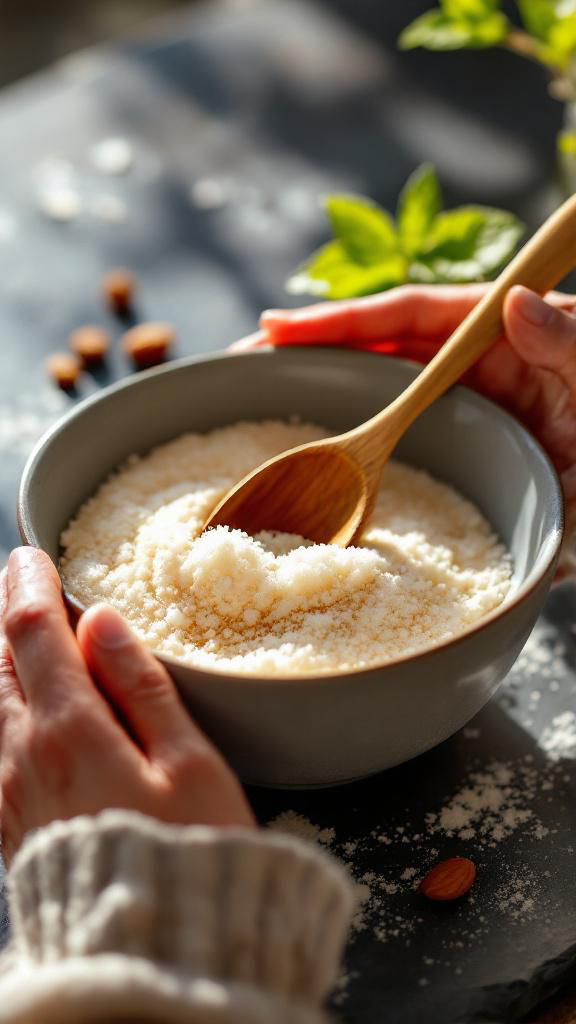
Add the Wet Stuff: In a small bowl or jug, lightly beat the two eggs with the lemon juice and almond extract. Make a hollow (a “well”) in the middle of your almond-sugar mix. Slowly pour the egg mixture into this well.
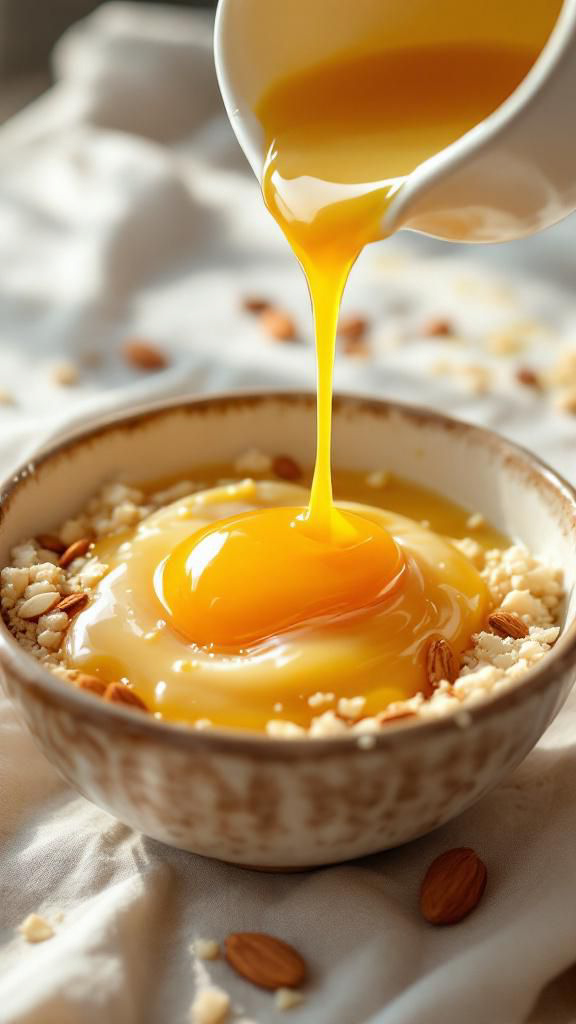
Bring It Together: Start mixing with your wooden spoon or spatula. It will look messy and sticky at first. Keep mixing until everything is combined and you have a thick, sticky paste with no dry bits left.
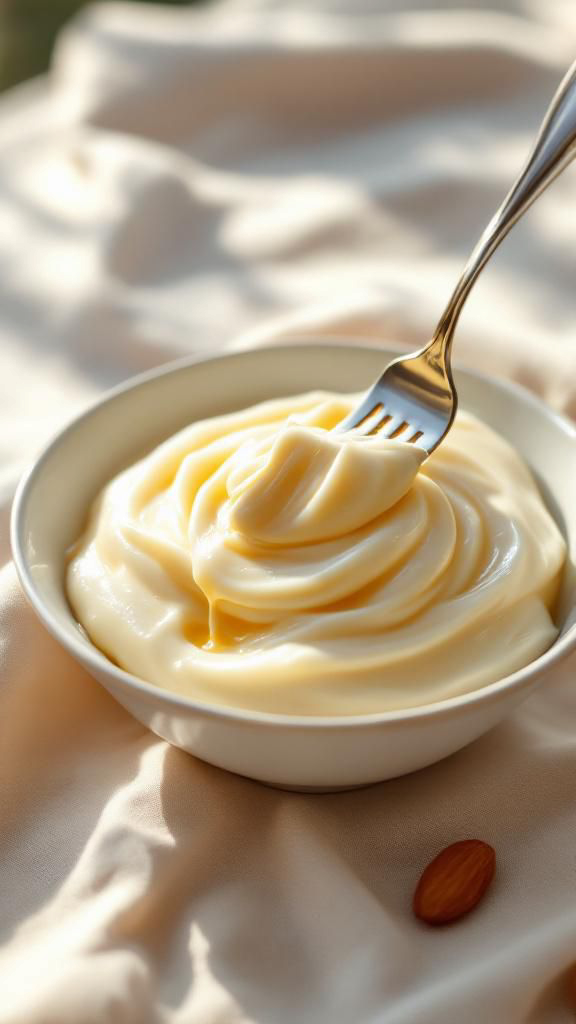
Knead Gently: Sprinkle a little icing sugar onto your clean work surface. Tip the almond paste out onto it. Knead it lightly, like you would dough, for just 1-2 minutes. Stop when it feels smooth and pliable, like firm playdough. Don’t over-knead! Too much makes it oily.
Let It Rest (Important!): Flatten the paste into a disc. Wrap it very tightly in cling film. Leave it sitting on the counter for at least 30 minutes (up to 2 hours is fine). This rest lets the sugar dissolve properly and makes the paste much easier to roll out later.
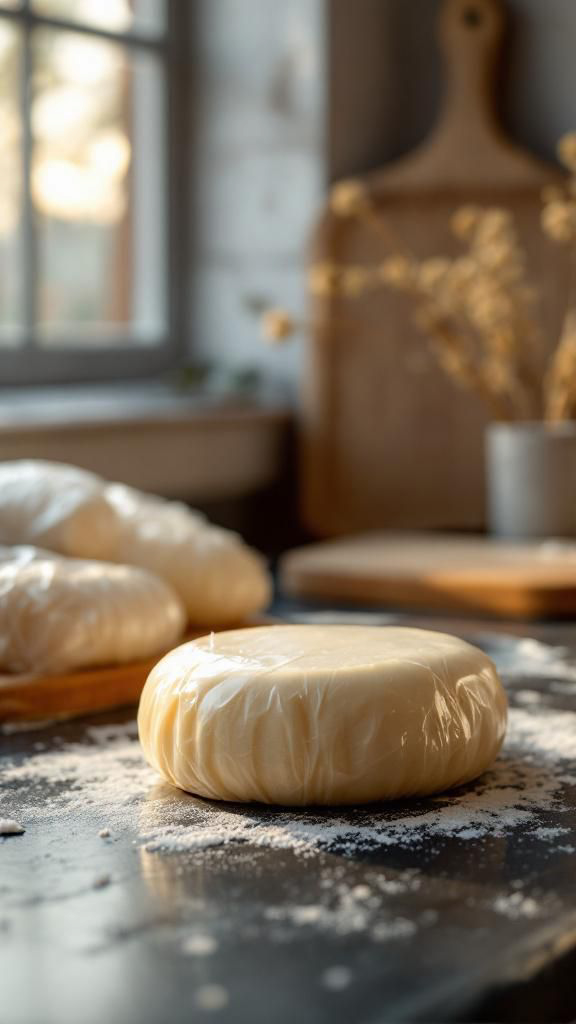
Prep Your Cake: Make sure your cake (like a fruit cake) is completely cold. Warm the sieved apricot jam slightly until runny. After this, Use the pastry brush to cover the top and sides of the cake completely with a thin layer of jam. This sticky layer holds the icing on.
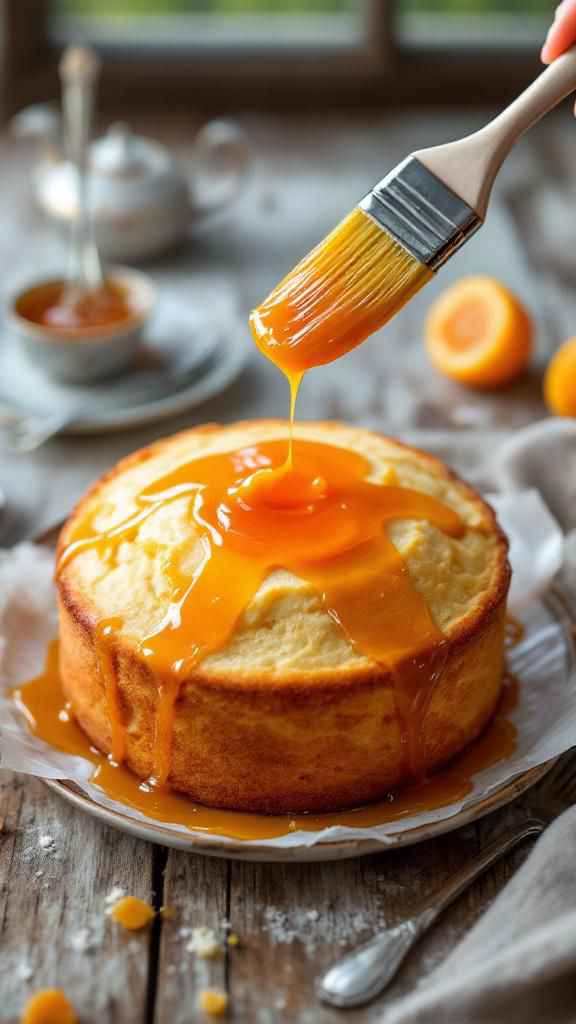
Roll It Out: After this, Dust your work surface and rolling pin lightly with icing sugar. Unwrap the rested almond paste. Roll it out into a circle big enough to cover your cake top and sides (aim for about 1cm / 0.5 inch thick). Lift and turn the paste as you roll, dusting with a tiny bit more icing sugar if it starts to stick.
Cover the Cake:
> Carefully lift the rolled icing – using your rolling pin to help support it. Gently drape it evenly over the jam-covered cake. Smooth the top first with your hands, then carefully smooth the icing down the sides, pressing out any air bubbles and making sure it sticks to the jam. After this, Use a sharp knife to neatly trim off any excess icing around the bottom.
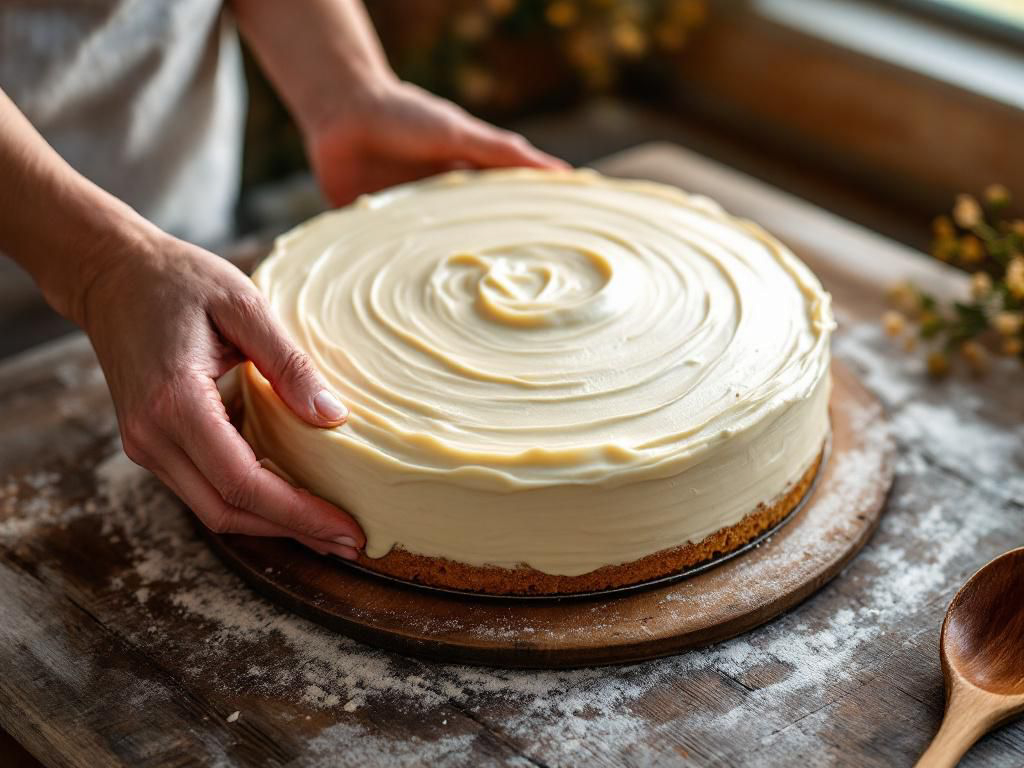
Taste & Nutrition
What to Expect: A deep, sweet almond flavour (thanks to the pure extract), balanced by a tiny hint of lemon tang. The texture is dense and moist, with a pleasant slight graininess from the almonds. The apricot jam underneath adds a lovely fruity sweetness.
Nutrition (Per 50g serving – roughly 1/10th):
- Calories: ~270
- Fat: 15g (Mostly healthy fats from almonds)
- Carbs: 28g (Sugars: 27g)
- Protein: 7g
- Fibre: 2g
- (Based on standard ingredient nutrition data from sources like USDA. Almonds give good fats and vitamin E, but it is quite rich in sugar.)
Mary Berry’s Top Tips for Success
- Too Sticky? Dust your hands and surface with a bit more icing sugar. Knead in just a tiny bit more sugar if needed.
- Too Dry or Crumbly? Mix in a few drops of beaten egg or lemon juice (not water!) and knead gently.
- Lumpy Paste? Make sure your ground almonds are fresh and fine. Sift them with the sugar at the start.
- Boost Flavour: A tiny pinch of fine salt can actually make the almond taste stronger. A few drops of rosewater or orange blossom water is a nice twist.
- Rest is Best: Don’t skip the 30-minute rest! It changes the texture from sticky mess to easy-to-roll perfection.
- Variations: Add natural food colouring (pink for Battenberg, yellow for Simnel). Mix in finely chopped cherries or orange zest. For chocolate almond icing, swap 25g almonds for cocoa powder.
Vegan Almond Icing (Just as Good!)
Want the same flavour without eggs? Here’s how:
- You Need:
- 225g Ground Almonds
- 225g Icing Sugar (Confectioners’ sugar – works better than caster here)
- 4-6 tbsp Aquafaba (the liquid from a tin of chickpeas) – Start with 4 tbsp
- 1 tsp Pure Almond Extract
- 2 tsp Lemon Juice
- 2-3 tbsp Sieved Apricot Jam (check it’s vegan)
- Make It:
- Sift the ground almonds and icing sugar together in a bowl.
- In a small bowl, whisk the aquafaba, almond extract, and lemon juice until a bit frothy.
- Slowly pour the wet mix into the dry ingredients. Mix until it forms a thick paste. Only add extra aquafaba, a teaspoon at a time, if it seems too dry – you want it firm.
- Knead lightly on an icing sugar-dusted surface until smooth.
- Wrap tightly in cling film and rest for 30-45 minutes (it firms up quicker than the egg version).
- Roll out and apply to your jam-brushed cake exactly like the main recipe.
Ways to Use It & Serving Ideas
- Covering: Essential for traditional British Christmas cakes (before royal icing) and Simnel cake (layered inside and on top, often toasted).
- Shaping: Roll small balls for decorations, shape into fruits, or cut shapes with cookie cutters (dust with cocoa for details). Famous for Battenberg cake!
- Eating: It’s delicious thinly sliced on its own with coffee. Pairs wonderfully with brandy butter, frangipane, or poached pears.
Storing & Keeping Fresh
- Unused Icing: Wrap tightly in cling film, pop in an airtight container. Keeps well at room temperature for 1 week or in the fridge for 3 weeks. Bring back to room temperature before rolling.
- Iced Cake: An uncut cake covered only in almond icing keeps in an airtight container in a cool, dark place for 3-5 days. If covered with royal icing, it lasts much longer (weeks/months). Avoid the fridge, as it can dry out the icing.
- Reheating: Don’t heat the icing itself. If you need to warm the cake, do it very gently to avoid making the icing greasy.
Your Almond Icing Questions Answered
- Q: Can I use almond flour?
A: Yes, almond flour (usually finer) works well. Just make sure it’s not “defatted” almond flour. - Q: Why is my icing cracking when I roll it?
A: It’s probably too dry. Knead in tiny drops of beaten egg (or aquafaba for vegan) or lemon juice. Did it rest long enough? - Q: Can I make the icing ahead?
A: Definitely! Make the paste, wrap it tightly, and store as above for weeks. Put it on the cake closer to when you need it. - Q: Is almond icing the same as marzipan?
A: They’re very close cousins! “Almond icing” often means the slightly coarser paste used under fondant on British cakes. “Marzipan” might be smoother for modelling. Mary’s recipe works perfectly for both. - Q: Can I freeze it?
A: Yes. Wrap the paste tightly in cling film, then put it in a freezer bag. Freeze for up to 3 months. Thaw slowly in the fridge overnight, then bring to room temperature before using.
Ready to Bake Like Mary?
Mary Berry’s almond icing recipe shows how simple ingredients and careful steps create something truly special. It’s that essential, flavour-packed layer that turns a good cake into a British classic. Whether you’re making a showstopping Christmas cake or trying the vegan version, you now have the know-how. Give it a try! Gather your best ingredients, follow the steps, and enjoy the satisfaction of making this timeless treat. We’d love to see your results – share your almond icing creations with us! Fancy more of Mary’s magic? Check out our guides to [Perfect Shortcrust Pastry] or [The Ultimate Victoria Sponge].
More Great Resources
- Mary Berry’s Official Site: Find recipes, news, and books: Mary Berry Official Website
- Mary Berry’s Best Books:



